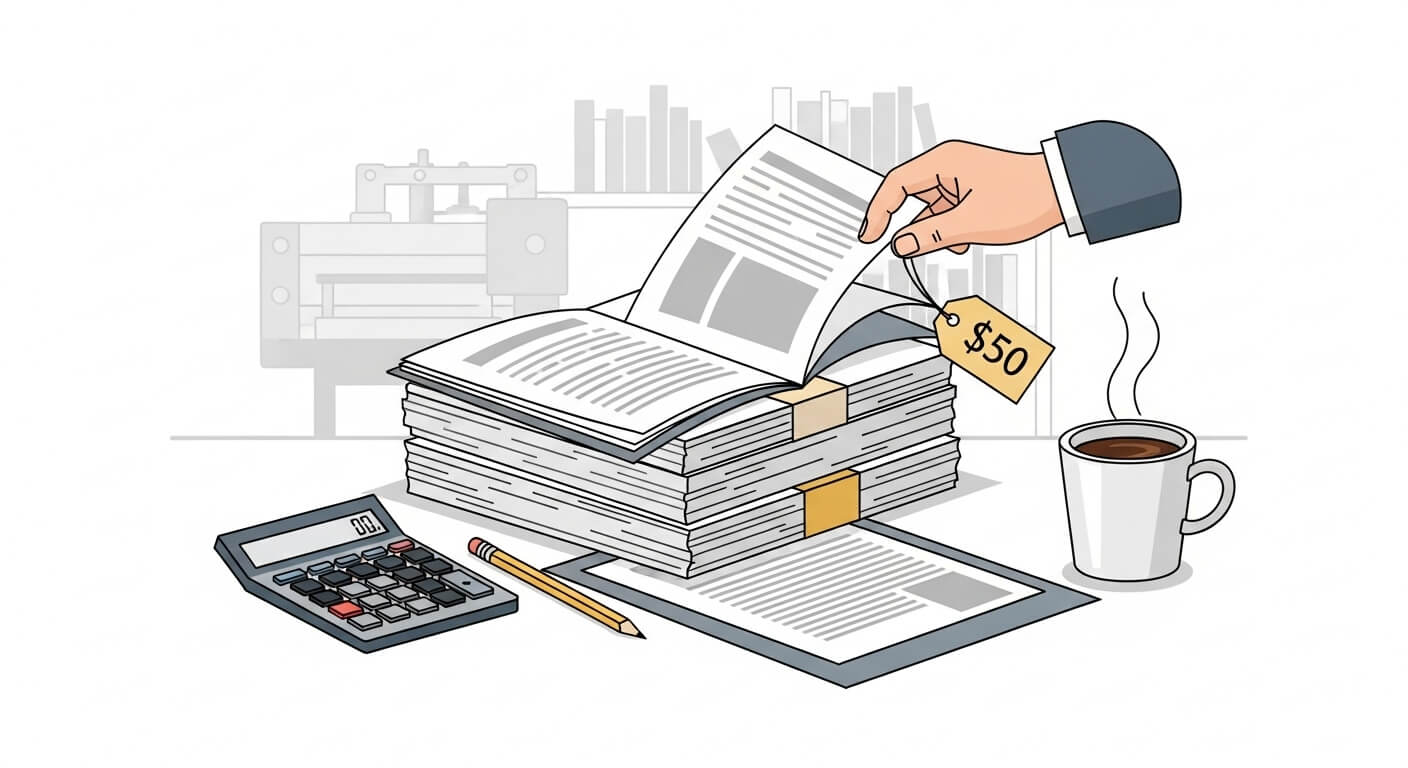
In the world of publishing, shorter books are gaining momentum, especially those around 100 pages. These books are easier to manage, faster to produce, and perfectly suited for memoirs, business insights, how-to guides, or creative fiction. But while writing a 100-page book sounds like a smaller undertaking, the costs involved can still add up.
Whether you’re self-publishing, working with professionals, or going hybrid, this blog breaks down every cost associated with creating a 100-page book in 2025—so you can make smart decisions and budget like a pro.
Table of Contents
ToggleWhat Exactly Is a 100-Page Book?
A 100-page book usually contains 20,000 to 25,000 words, depending on the page layout, font size, and trim size. It’s ideal for:
- Entrepreneurs wanting to build authority
- First-time authors testing the waters
- Memoirs and autobiographical stories
- Niche fiction (novellas, short stories)
- Educational material or guides
The shorter length often makes publishing more accessible and cost-effective, but many of the production steps remain the same as a full-length book
Average Cost Breakdown in 2025
Creating a 100-page book can cost anywhere from $2,000 to $10,000+, depending on the level of quality, the professionals you hire, and the platforms you choose.
Here’s a general breakdown:
|
Let’s now explore each of these stages in more detail.
1. Writing the Book
If you’re writing the book yourself, the cost is your time and energy. But if you plan to hire a ghostwriter, the price depends on the writer’s experience and the complexity of the topic.
Ghostwriting Rates in 2025:
- Basic ghostwriters: $0.10–$0.25 per word
- Professional writers: $0.30–$0.50 per word
- Premium experts or agencies: $5,000–$10,000 for the full project
For a 20,000-word manuscript, you might pay between $2,000 $6,000.
Tip: Ensure you sign a contract that includes ownership rights and revision rounds.
2. Editing and Proofreading
A professionally edited book reads better, flows smoother, and earns trust with readers. There are different types of editing:
Types of Editing:
- Developmental Editing: Big picture suggestions on structure and content
- Line Editing: Focuses on sentence flow, grammar, and tone
- Proofreading: Final polish to catch typos and errors
Estimated Cost:
- Developmental: $500–$1,000
- Line Editing: $300–$800
- Proofreading: $200–$500
Some freelancers or services offer bundled editing packages for smaller books.
3. Cover Design
Never underestimate the power of a book cover. It’s the first thing potential readers see.
Options in 2025:
- DIY Tools (Canva, BookBrush): $0–$50
- Freelancers on Fiverr/Upwork: $100–$300
- Professional Design Studios: $300–$800+
Make sure your designer delivers a high-resolution, print-ready file and understands the expectations of your genre.
4. Interior Formatting
Formatting ensures your text looks good on both digital devices and in print. It includes font selection, spacing, headers, and chapter layout.
Formatting Costs:
- DIY Software (like Vellum or Atticus): $100–$250 (one-time license)
- Freelancer Formatting: $150–$600
You’ll need formatting for both print (PDF) and eBook (EPUB/MOBI). Some designers bundle this with cover design.
5. ISBN, Copyright & Publishing
Publishing your book independently means securing an ISBN and optional copyright protection.
Common Fees:
- ISBN (US via Bowker): $125 for 1 or $295 for 10
- Copyright registration (U.S.): $65
- Amazon KDP: Free to upload
- IngramSpark: $49 upload fee, waived with promotions
Owning your ISBN gives you full control, especially if you plan to sell through various platforms.
6. Marketing and Launch Promotion
Even the best-written book won’t sell if people don’t know about it. Marketing costs vary, but it’s a must if you want to recoup your investment or grow your brand.
What You Might Pay For:
- Email marketing setup: $100–$300
- Social media ads (Meta, Amazon): $100–$1,000+
- Press releases or PR firms: $300–$1,500
- Book reviews or blog tours: $100–$500
Total marketing budgets can range from $300 to $2,000+, depending on your goals.
7. Print-on-Demand and Distribution
Most indie authors use print-on-demand (POD) platforms like Amazon KDP or IngramSpark to print books only when orders come in—saving on upfront costs.
POD Costs:
- Black & white paperback (100 pages): $2–$4 per copy
- Color version: $5–$8 per copy
- Author copies: Discounted, but shipping may apply
KDP is ideal for beginners, while IngramSpark offers broader distribution, including bookstores.
8. Audiobook Conversion (Optional)
Turning your book into an audiobook adds accessibility and income potential, especially with audiobook sales growing globally.
Costs in 2025:
- DIY narration: $0–$500 (if you already have a mic and editing tools)
- Professional voice actor: $500–$2,000
- Editing/mastering: $300–$800
Use platforms like ACX or Findaway Voices for distribution.
9. Can You Make the Money Back?
Absolutely—if you’re strategic.
Ways to Profit:
- Direct sales through Amazon or your website
- Using the book to generate leads (for coaching, courses, or consulting)
- Bundling your book into workshops, email funnels, or paid courses
- Securing speaking opportunities by using the book as your credibility tool
Even if you only sell 500 copies at $9.99 with a $4 royalty, that’s $2,000 earned back.
Tips to Save Money Without Sacrificing Quality
- Use AI writing tools (like ChatGPT) to create a draft, then hire an editor
- Bundle services: Some freelancers offer editing + formatting
- Focus first on eBook publishing, then scale to print and audio
- Consider barter or student designers for budget-friendly cover art
- Join writing communities to find beta readers and free feedback
Final Thoughts: Is a 100-Page Book a Good Investment?
Creating a 100-page book in 2025 is one of the most powerful tools for building credibility, growing your brand, and sharing your story. While the cost can range between $2,000 $10,000+, what you get in return is far greater than just book royalties.
You’re investing in a product that can generate leads, land speaking gigs, boost authority, and connect with readers across the globe. Whether you’re writing fiction, nonfiction, or a personal memoir, a well-produced book can leave a lasting impact and open doors you never expected.

 +1-623-439-7197
+1-623-439-7197


